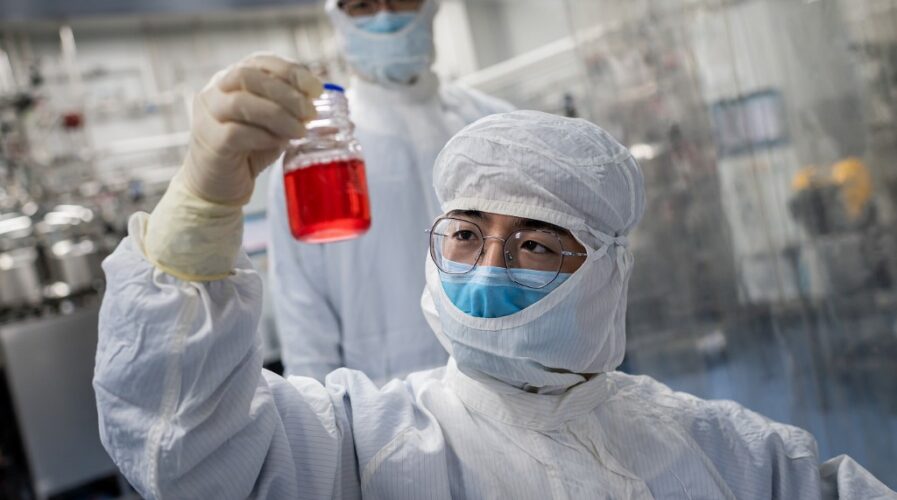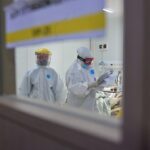
The challenges of 2020 have left biotech and broader health sciences sector with tattered supply chains. Source: AFP
3 trends shaping the Asian biotech supply chain in 2021
- The challenges of 2020 have left biotech and the broader health sciences sector with tattered supply chains, requiring innovative solutions next year
Big changes are afoot in the way pharmaceutical medications and other biological technologies (biotech) will be accessed and made available around Asia. As most of the world still grapples with COVID-19, the rapidly-shifting realities of the biotech supply chain will have significant and potentially longer-lasting impacts on not just the biotech industry, but society at large.
Along with the many changes we have had to contend with during this ‘New Normal’ of living and dealing with the constant specter of a health crisis, it shouldn’t come as a huge surprise that medical professionals, suppliers, and practically all links to the medical sciences value-chain have had to evolve their strategies to cope with the rigors of manufacturing, producing, and distributing high-value drugs not just in Asia, but globally.
With coronavirus vaccine deployments all but a certainty for 2021, Tech Wire Asia examines three out of several very likely outcomes to expect from the Asian biotech supply chain in the coming year.
Getting biotech innovations to market faster
Trying to get medication and pharmaceutical drugs to market earlier is nothing new of course, but with all the travel and physical restrictions of 2020, stakeholders have had to rethink medication production not just in terms of lab location and country of origin.
Instead, leveraging on technology to accelerate production and increase productivity should play a bigger role next year, as the market has grown accustomed to quicker turnarounds on medical breakthroughs, and production delays could negatively impair the public’s perception of the producer.
We should also see smaller firms stepping in to play larger roles, with larger investments being poured into biotech research and development here in Asia. In Singapore for instance, biopharma and medtech startups will be among the healthcare and biomedical science startups receiving $148.3 million in funding from venture capitalists.
And that does not include the $126.9 million allocated for digital health startups, according to ESG data.
Centralized delivery systems
Due to the high risk-reward of developing a thoroughly-tested biomedical product, sound contingency planning is expected of the biotech and its affiliated sectors. Back-up plans could be the difference to disastrous biotech supply chain disruptions, literally putting lives at risk.
With unforeseen events like the COVID-19 situation, central distribution hubs begin to play an increasingly critical role. In Singapore, Asia’s top logistics hub for more than 10 consecutive years, there are more than 50 biopharma manufacturing plants with output close to US$21 billion, or nearly a quarter (21%) of Singapore’s total manufacturing activity.
Singapore works well as a central distribution hub naturally thanks to its central location along major trading routes, but also because of its accessibility by multiple transportation modes, connectivity, availability of a professional talent pool, as well as a resourceful, well-funded R&D ecosystem.
Expect more innovation
The global biopharma market is expected to reach US$269.3 billion by 2024, driven by the industry’s inherent purpose of treating previously untreatable diseases, which can be very profitable. Just as the industry is constantly exploring the bleeding edge of medical innovation, so too should its supply chain keep tabs on technological innovations that is bringing major change to the transportation and logistics sectors themselves.
FedEx is already trialing drone-delivered medical supplies, which the UK’s National Health Service has also tried. While this trend will be largely observed in parcel delivery like Amazon has implemented in the past, it’s not hard to imagine that air delivery drones might deliver vaccines or even blood or tissue samples for clinical trials into the 2020s.
Even when the COVID-19 pandemic subsides, contactless delivery is set to increase, as more advanced, digitally-enabled delivery trends are further developed over time.
READ MORE
- Ethical AI: The renewed importance of safeguarding data and customer privacy in Generative AI applications
- How Japan balances AI-driven opportunities with cybersecurity needs
- Deploying SASE: Benchmarking your approach
- Insurance everywhere all at once: the digital transformation of the APAC insurance industry
- Google parent Alphabet eyes HubSpot: A potential acquisition shaping the future of CRM


